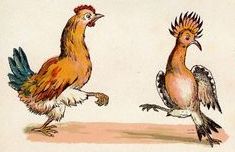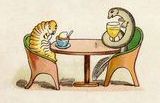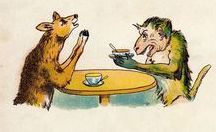CPSIA has come at a steep price for the Northwest Denver Toy Library, which has had to throw out nearly 400 of the 500 toys in its stock because it has no way of being sure that they comply with the 2008 federal law. [9News.com Denver]
Posts Tagged ‘CPSIA’
A crack in the CPSIA concrete?
In what one hopes is a break from the “no legislative fix needed” united front put forward by the law’s advocates, Consumer Product Safety Commission chair Inez Tenenbaum has acknowledged in a letter to Rep. George Radanovich (R-Calif) that at least some legislative action establishing exceptions to the law’s sweeping bans might be helpful. Product Safety Letter has the story. Relatedly:
- Handmade Toy Alliance board member Rob Wilson notes
that “Congress Wrote the CPSIA; Only Congress Can Amend It“, and the HTA has now had a chance to meet with CPSC commissioners (more from Rick Woldenberg, who also challenges Tenenbaum on the rhinestone ban and notes Rep. Dingell’s efforts to press her on the law’s shortcomings); Carter Wood thinks it’s time for a Senate hearing;
Can Amend It“, and the HTA has now had a chance to meet with CPSC commissioners (more from Rick Woldenberg, who also challenges Tenenbaum on the rhinestone ban and notes Rep. Dingell’s efforts to press her on the law’s shortcomings); Carter Wood thinks it’s time for a Senate hearing; - Crafter Whimsical Walney, now out of business as regards children’s goods, is not entirely thrilled about the New York Times’s belated coverage of the CPSIA fiasco;
- The ban on brass, and its effects on school bands and kids’ music generally, comes in for criticism from Ryan Young at CEI Open Market, Deputy Headmistress, Rick Woldenberg again, and a Washington Times editorial;
- “You only know if a product is safe if it’s been tested,” claims Rachel Weintraub of the Consumer Federation of America, drawing
 a riposte from Rick Woldenberg;
a riposte from Rick Woldenberg; - Glenn Cook at the Las Vegas Review-Journal calls CPSIA the law Congress “refuses to fix“, while Quin Hillyer at the American Spectator calls it the “worst low-profile law on the books“.
PUBLIC DOMAIN IMAGES from Elise Bake, Der Ball Der Tiere (“The Animals’ Ball”, German, 1891), courtesy ChildrensLibrary.org.
Jerry Brown’s “toxic clothes” crackdown
Rick Woldenberg talks back to the California attorney general, and also raises some questions about Proposition 65 and the finances of the freelance enforcers in the case, the Center for Environmental Health (CEH). Two years ago we covered CEH’s crusade against the iPhone. More: Darleen Click/Protein Wisdom and a followup from Woldenberg.
CPSIA, big and small business, cont’d
Rick Woldenberg casts a skeptical eye on the Toy Safety Certification Program (TSCP), a voluntary toy-safety program promoted by both the Consumer Product Safety Commission (CPSC) and the Toy Industries Association that in some respects goes beyond even the requirements of the CPSIA. His contention: “the TSCP significantly favors mass market companies in an almost shameless way.”
“BRIO? Indies? Toy Casualties Mount In CPSIA Trainwreck”
The toy shelf gets barer. [Daddy Types] Related: Handmade Toy Alliance, Dan Marshall, Rick Woldenberg, Common Room.
CPSIA’s ban on brass
By a 3-2 vote, the CPSC has confirmed that the absurd and inflexible Consumer Product Safety Improvement Act bans the sale of children’s products which contain components of conventional (leaded) brass. The vote drew dissents from commissioners Anne Northup (statement) and Nancy Nord (official comments, PDF; further statement at her blog). From the latter:
…The Commission has now very clearly determined that we do not have the flexibility under the law to make common sense decisions with respect to lead.
…I am especially concerned about what this decision means for our schools, where brass is found on desk hinges, coat hooks, locker pulls and many other items. Are schools now going to be forced to remove all brass and if so, who will bear this financial burden?…brass is found throughout a home and removing it from toys does little in terms of removing it from a child’s environment. If brass were really harmful to children, we would be taking action to remove it from the home but no one is suggesting that there is a safety issue that needs to be addressed in this way.
Evidence of actual health risks from brass in the everyday environments of American children is, of course, anything but compelling. Rick Woldenberg has been covering the story here, here, here, and here. Greco Woodcrafting predicts rough times ahead for school bands, as well. And the WSJ editorializes today.

More: this summer the CPSC issued guidance on the closely related topic of ballpoint pens (the roller balls of which include lead alloy); the upshot was so long as manufacturers don’t primarily market any given pen design as being for kids, they’re in the clear, even if large numbers of children are among the pens’ users. (Writing Instrument Manufacturers Association petition and response, both PDF; earlier here, here, etc.) For more on that episode, see 3 Green Angels, NAM “Shop Floor” and more, Rick Woldenberg and more, and Whimsical Walney.
PUBLIC DOMAIN IMAGES from Elise Bake, Der Ball Der Tiere (“The Animals’ Ball”, German, 1891), courtesy ChildrensLibrary.org.
Making hair bows in west Michigan
A nice way to support a family, but it’s sure too bad about CPSIA. And a Columbus, Ohio stay-at-home mom trained as an artist is afraid the law’s testing costs will sink her small-batch online business making bibs, burp clothes, blankets and similar baby items. [Business First of Columbus]
P.S. Be warned: the Grand Haven, Mich. report contains an error regarding the law’s coverage of secondhand stores (h/t reader Panthan in comments).
The New York Times finally reports on CPSIA
[Bumped Monday a.m. for readers who missed it over the weekend]
The piece appears in the business section of Saturday’s Times, and it’s a perfectly good one as far as it goes. It starts off with a wooden toy maker in Ogunquit, Maine, who estimates that it would cost him $30,000 to secure testing for the 80 items he makes, using such materials as maple, walnut oil and local beeswax. It touches on the strains between large and small manufacturers, ![]() as well as the thrift-store and vintage-book angles. Overall, it’s really not a bad piece of its sort.
as well as the thrift-store and vintage-book angles. Overall, it’s really not a bad piece of its sort.
Aside from its timing, that is. The Times has now gotten around to covering some of the harm done by this law ten months after the Washington Post and other media had begun reporting the basic outlines of the story; nine and a half months after a furor had built to national proportions, prompting both members of Congress and the CPSC to hurry out supposed clarifications; nine months after hundreds of bloggers were on the case, the law’s effects on thrift stores were making headlines from coast to coast, and the Times’s continuing failure to report on the law’s effects had commentators noting its “weird blind spot” on the issue; eight and a half months after a deeply clueless Times editorial assailed critics of the law who  “foment needless fears that the law could injure smaller enterprises like libraries, resale shops and handmade toy businesses”; seven and a half months after protests by minibike dealers began drawing wide national coverage; seven months after critics rallied on Capitol Hill, and the Washington Post joined in reporting on the law’s dire effects on vintage (pre-1985) kids’ books; and so on to the present.
“foment needless fears that the law could injure smaller enterprises like libraries, resale shops and handmade toy businesses”; seven and a half months after protests by minibike dealers began drawing wide national coverage; seven months after critics rallied on Capitol Hill, and the Washington Post joined in reporting on the law’s dire effects on vintage (pre-1985) kids’ books; and so on to the present.
Okay, so the Times was — well, not a day late and a dollar short, but more like 300 days late and many billions of dollars in overlooked costs short. Still, let’s be grateful: the paper’s news side has now implicitly rebuked the editorial side’s fantastic, ideologically blinkered dismissal of “needless fears that the law could injure smaller enterprises”. And the Times’s belated acknowledgment of the story can serve as permission for other sectors of the media dependent on Times coverage — including some magazines and network news departments — to acknowledge at last the legitimacy of the story and begin according serious attention to the continuing CPSIA calamity. When they do, they will find much to catch up on. (& welcome Handmade Toy Alliance, Chris Fountain readers)
PUBLIC DOMAIN IMAGE from Ethel Everett, illustrator, Nursery Rhymes (1900), courtesy ChildrensLibrary.org.
What it means for a product to be “safe”
Don Boudreaux has some thoughts on that. [Cafe Hayek]
Food safety law expansion barreling through Congress
And per this L.A. Times account, business — at least business with an organized Washington, D.C. presence — is on board, just as it was when CPSIA passed. So what could go wrong?

